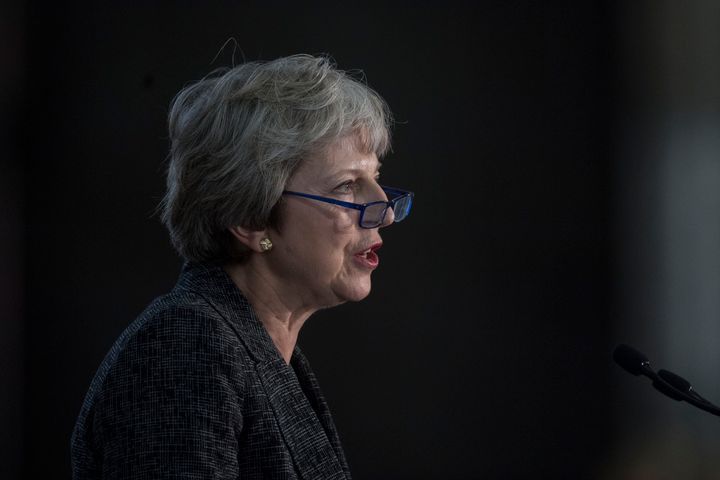
It’s the Brexit plan that caused cabinet resignations and was described by David Davis as “almost worse than being in” the EU. And the EU’s chief negotiator, Michel Barnier, has said it would spell the “end” of the bloc altogether.
But what actually is it?
The Chequers Agreement Explained – In 1 Sentence
The plan agrees that:
Britain would continue to observe EU rules on goods to ensure frictionless trade, but would be free to decide most rules for services, decide who enters the country and make its own laws.
Phew.
The Nitty Gritty
In a three-page document released to mark the Chequers proposal, the government outlines its broad aims for negotiations with the EU, covering a range of “hot topic” areas.
Trade
The plan aims to ensure the frictionless trade of goods and stop queues at the border with the EU by observing all the bloc’s rules on them.
This proposal seems to be particularly aimed at solving any problems around the “just in time” trade of fresh foods.
“The UK and the EU would maintain a common rulebook for all goods including agri-food, with the UK making an upfront choice to commit by treaty to ongoing harmonisation with EU rules on goods, covering only those necessary to provide for frictionless trade at the border,” the document states.
Yet, under the Chequers plan, the UK would not adopt EU rules on all services. The government believes that the ability to be flexible when trading with countries outside the EU could offer Britain bigger fortunes and therefore be worth the “cost” of tariffs or barriers with the bloc.
“We would strike different arrangements for services, where it is in our interests to have regulatory flexibility, recognising the UK and the EU will not have current levels of access to each other’s market,” the document states.
The government believes this would provide a fair and balanced plan which solves the issue of the Northern Ireland border with Ireland.
The plan also says that the UK would leave the Common Agricultural Policy and the Common Fisheries Policy, “taking back control of UK waters as an independent coastal state and designing a domestic agricultural policy that works in the best interests of the UK”.
Immigration
Under the Chequers plan, Britain would gain full control of immigration and be able to decide who can enter the country.
“[E]nd free movement, giving the UK back control over how many people enter the country,” the document says.
There would, the plan adds, be a “mobility framework” so that “UK and EU citizens can continue to travel to each other’s territories” and apply for study and work.
Law-making
All laws would be made at the Westminster Parliament, and where applicable, the devolved legislatures, even where laws affect EU rules governing trade.
If any UK laws contravene EU rules, politicians would make their decisions in the knowledge that it could put trade with the bloc at risk.
“[E]nsure that in the future all laws in the UK would be legislated for by Parliament and the Devolved Administrations and subject to proper oversight and scrutiny,” the plan states.
The plan also seeks to restore the supremacy of UK courts – withdrawing Britain from the purview of the Court of Justice of the European Union. (It’s worth noting that this is not the European Court of Human Rights.)
The environment, climate change, employment and consumer protection
Under the Chequers plan, all these would be subject to joint UK-EU deals “meaning we would not let standards fall below their current levels.”
Annual payments
The plan says that “vast annual payments” to the EU, most recently estimated at £13.1bn, would be a thing of the past.
There would be “appropriate contributions” towards budgets for certain areas, such as science and research.
But savings would be spent on “domestic priorities… in particular our long-term plan for the NHS”.
Read all you need to know from the world of Brexit by signing up to HuffPost’s weekly Brexit Briefing - sent straight to your inbox every Thursday.
